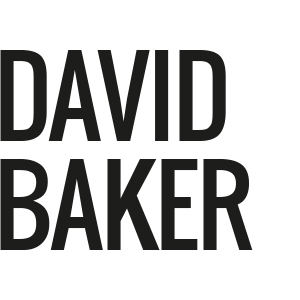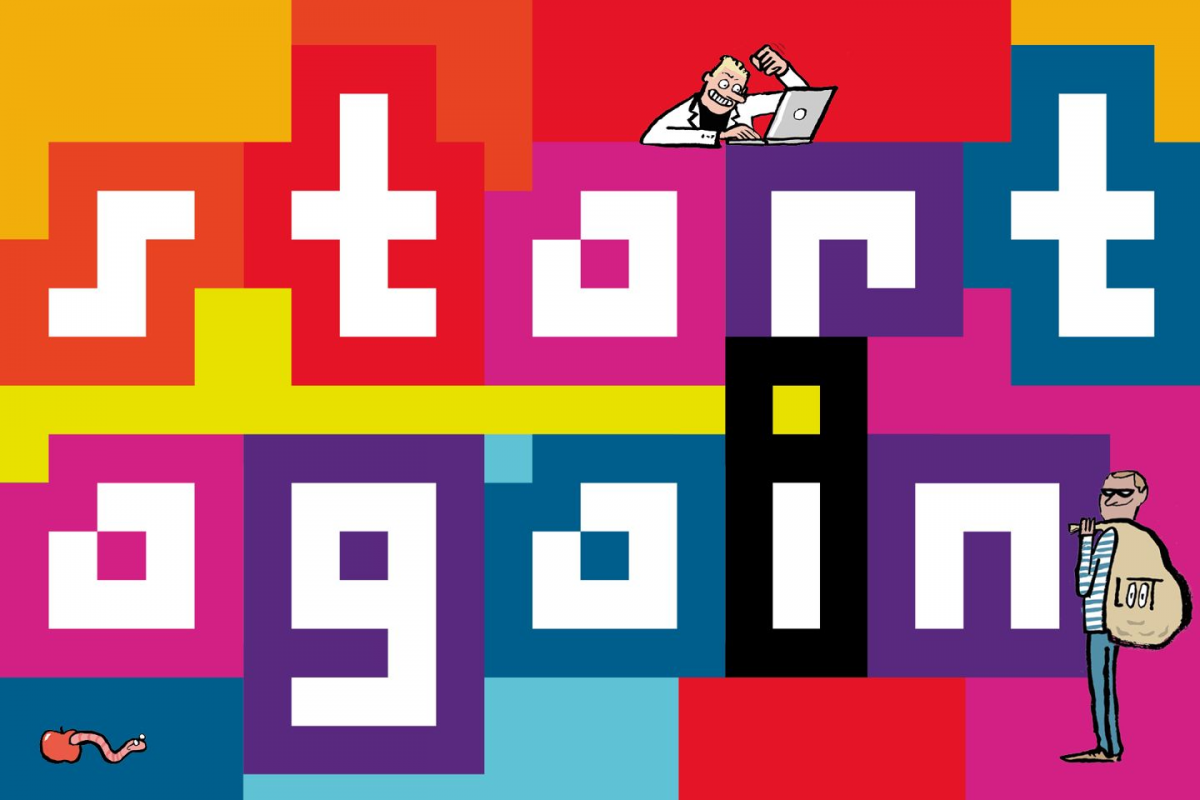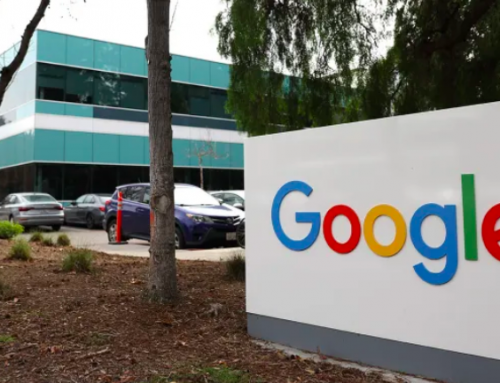Wired, January 2018
We like to picture the internet as a set of pipes along which information flows. But a better metaphor would be to see it as an enormously complicated set of roads, with trillions of vehicles being driven in convoy, splitting off in different directions and finally coming back together again at their destination, where they are put back into order and become that cat gif, Netflix show or Instagram photo from your niece’s birthday. These are the packets, little strings of zeros and ones, that the estimated 60,000GB of data shared on the internet every second is converted into, before it’s reached by the computers “at the edge”: on your phone, on your laptop, at home, wherever you are.
That is to say, the network has no idea what it contains. That neutrality is the reason it has grown into an unprecedented engine of human ingenuity. It gives equal weight to Facebook photos as to Skype calls with loved ones, games of Destiny, phishing emails and cyberattacks that can take down a country’s power grid. Its greatest triumph is also its nagging flaw.
What’s more, the internet was built on decades-old technology. Today, the internet comprises billions of devices, every one of which is more powerful than those upon which the internet and the web were built. Storage is exponentially cheaper and wireless technologies mean that countries are developing web infrastructures that aren’t built on undersea cables. Our phones can scan our fingerprints and faces, making payments secure. Emerging technologies such as the blockchain enable experiments in new models for file sharing and value exchange.
So let’s consider a thought experiment: if we were to reset the internet – shut everything down and start again, using 30 or so years of experience – would it still look the same? Or would we design something different… even better?
The man to thank for much of the internet’s existing design is Vint Cerf, who, along with Robert Kahn, invented the internet’s core means of communication, the TCP/IP protocol, in the 70s.
“The system has scaled up quite remarkably and that’s a tribute to its ‘incompleteness’,” Cerf explains. “When we designed the network, we didn’t have a specific purpose in mind. We didn’t care what the application was. We just wanted to get packets from one point to another.”
Cerf is now an elder statesman at Google, where his sharp dress sense contrasts with his pastel-clad colleagues. Cerf has a not unreasonable sense of pride when he talks about that early call to make both the network and the packets “dumb”. “As the system grew and the data rates we could support increased, we could conveniently handle, for example, voice and video.” The network, as Cerf and Kahn designed it, can carry almost anything.
Cerf would be reluctant to change this in a new internet. “The advantages outweigh the disadvantages,” he says. And pretty much everyone would agree – TCP/IP basically works. But in our hypothetical new internet, there’s a second core feature of Cerf and Kahn’s network that we may want to revisit: its client-server structure, the idea that information lives somewhere (a server) and we (clients) go to that place to access it.
Dirk Trossen is a senior principal scientist at InterDigital, a networking consultancy based on London’s Old Street. He’s convinced that, on the internet at least, we’ve hit the end of the road for clients and servers.
“So much has gone right with the internet,” he says, “you sometimes don’t notice it. You have an awful lot of innovation at the top. Even though you have large-scale providers like Facebook and Google, you also have your mom-and-pop shop at the corner that can just set up a website and it works. And there’s the connectivity: Skype, the Hangouts, the cheaper costs that we all take for granted. That’s the application innovation on top of the net. The internet has done very well in that space.”
“Look at the name, like a door where you knock to get entry and behind there might be a big library. But now information can come from almost anywhere. So there should no longer be this idea that I have to go somewhere to get it.” Storage at the edge, he says, on our phones and computers now far outweighs storage at the core.
Trossen’s proposal, which he is prototyping at InterDigital as part of a worldwide initiative, is for an “information-centric network” (ICN), an internet that is in effect devoid of geography. Instead of uniform resource locators (URLs) – the web addresses that we use to access servers of information – an ICN-based internet will have uniform resource identifiers (URIs), labels attached to tell everyone else what that information is. Then, if we want to stream a video or download a picture, we put out a call for that information and leave it to the network to work out where it is – which might be as close as on the phone of the person sitting next to us.
The immediate advantage of a network structure like this is a reduction in latency – the delay between requesting data on a network and receiving it. Often this is lightning fast, but with the explosion in video and gaming, latency has become a big deal. No one wants to watch a buffering wheel instead of Game of Thrones.
ICN attempts to get round the latency problem by using something that will be familiar to anyone who has downloaded (or stolen – take your pick) a movie via BitTorrent. BitTorrent clients are aware that copies of files exist simultaneously in sometimes thousands of places on the internet (in this case, on the hard drives of other people who have downloaded the same file). And they work by sourcing fragments of the file from as many sources as they possibly can.
For Trossen, it makes much more sense to treat all information on the internet this way. He’s already demonstrated how an ICN network can feed a single Netflix stream to multiple users watching at slightly different times, with a significant reduction in costs. He’s confident his ICN network will fit on top of the existing IP architecture, and will be running a live trial in 2018.
Trossen says URIs can also address one of the internet’s contemporary problems: trust. Much misinformation on the internet, from phishing emails to fake news, rely on IP spoofing: persuading someone to access information from one server, thinking they are accessing another. In an ICN network, the server is irrelevant; it could be in Cincinnati or a friend’s phone. Instead, the information can be given an authentication code. That would be one method of sending fake news the way of email spam. By making anonymity harder to pull off, everything would be travelling the internet carrying a fingerprint from its origin. It would also, Trossen hopes, deter cyber-bullying and cyberattacks.
The internet’s blindness can be traced back to its military origins, where nodes on the edge of the network needed to pull down information from centralised data centres. Those origins led to a series of benchmarks that still apply today.
In the 1988 paper The Design Philosophy of the DARPA Internet Protocols, David C Clark, then and now an internet researcher at MIT Computer Science and Artificial Intelligence Laboratory, wrote that the internet’s primary goal was to link networks – originally the US Department of Defense’s ARPANET and its Arpa radio network. He also pointed out its seven secondary goals:
1. Internet communication must continue despite loss of networks or gateways.
2. The internet must support multiple types of communications service.
3. The internet architecture must accommodate a variety of networks.
4. The internet architecture must permit distributed management of its resources.
5. The internet architecture must be cost effective.
6. The internet architecture must permit host attachment with a low level of effort.
7. The resources used in the internet architecture must be accountable.
These goals were ranked in order of importance. Changing that order would result in a different internet.
Facebook is what’s known as a supernode on the internet. In June 2017, it announced that it had hit two billion monthly active users, about two thirds of everybody online. This vast amount of data means that Facebook’s revenues are currently running at about $9 billion (£6.8bn) per quarter. Speaking over Skype from a coffee shop in Malmö, Sweden, Aral Balkan is advocating a grassroots revolution against the dominance of such supernodes. The founder of ind.ie, a social enterprise dedicated to building a new internet, he sees the future internet as one in which individuals retain control over their data and how they benefit from it.
Balkan lays the blame for how the internet has turned out on what he calls the pendulum effect caused by the network’s client-server architecture. “If you look at the history of computing,” he says, “it’s gone back and forth between centralised and decentralised computing. We started with mainframes. Then we had the era of personalised computing, which was the last time we had decentralised technologies that we owned and controlled. Then we went into the era of the web, where we took this client-and-server technology into an enzymatic pool of capitalism, which incentivises these servers to scale vertically. So we’re in mainframe 2.0 and these servers grew, coalesced and became the Googles and the Facebooks. We’re connected to computers we don’t own. Our activity has given them extraordinary power.”
What’s more, he says, it has made a huge difference to our feelings about surveillance. Facebook and Google provide an invaluable service: they filter the near-infinite content on the web, reducing our choices, focusing our attention. The Filter Bubble is awfully convenient. But we have turned a blind eye to the amount of data we are happy for those companies to store and use.
Balkan’s response is both technological and political. (“The internet is not just about technology,” he says.) Ind.ie has launched Better, a privacy tool that stops Safari users being tracked on the web. And he has built a prototype of a decentralised internet that allows people to share data, connect with friends and communicate without going through an intermediary.
“Imagine a world where every citizen owns and controls their own place on the internet,” he says. “This is a space where both your public and your private information is kept. The private stuff is end-to-end encrypted, so only you have access to it, and the public stuff is there so that you can share your thoughts and views. People can reach you at this always-on node, using a domain name. These connections are peer-to-peer. If we want to talk, we can use our always-on nodes to find each other and then, if I want to send a message or a photo to you, it goes directly from my phone to yours because we have already found each other. So this is the topology that I would see as the exact opposite of what we have today, which is a man-in-the-middle web topology of everything that has to go through Facebook or Google.”
Balkan is not alone in having a vision of a decentralised internet. Tim Berners-Lee and the Solid group at MIT are exploring similar principles. Jacob Cook’s arkOS project, which allowed individuals to create personal clouds on the Raspberry Pi, had similar aims. (arkOS was discontinued after running out of resources; Balkan has built his prototype on $100,000 of crowdfunding.) Maidsafe, based in the Scottish town of Troon, recently launched a decentralised internet project after a decade of R&D. The Mozilla Foundation has created a $2 million prize for promising ideas. Other groups such as Namecoin are building decentralised and peer-to-peer experiments on the blockchain.
Balkan’s model also comes with a dose of political activism. He is a member of the left-leaning, pan-European political group DIEM25. And he sees as much a role for regulation as for technology in building a new internet.
“With DIEM25, we’re trying to create policies that will be adopted by political parties across Europe to encourage this sort of technology and infrastructure to be built. In Europe, we have a different history [to the US]. We have a very recent history of understanding what it means when privacy is eroded on a mass scale. So I really feel we have an opportunity to get Europe to create this internet of people as I call it, instead of an internet of things owned by corporations.”
Activists such as Balkan highlight an important truth about the internet that we have either forgotten or have been seduced by: the network is not apolitical. The network may be “dumb” – but it has also allowed the worldwide dissemination of particular political ideals that come primarily from Silicon Valley.
In the Valley, those values – that information wants to be free, that disruption is always the result of healthy competition and an unquestioned belief in the function of the free market – are sacrosanct. A ride-sharing app flaunts local regulations? If enough customers like something, it must be the law at fault. Anonymity is an incontrovertible right, many argue, and online abuse is a small price to pay. (Note that the primary advocates of this viewpoint are often advantaged white men.) This political viewpoint has steadily become the groupthink of Silicon Valley. It has brought them into conflict with politicians, especially in Europe. The network itself has played a big part in bringing about this unequal distribution of power. Because of what are called network effects, once a node on a network starts getting large – especially when its business is connecting people – everyone will flock to it, making it even larger. If all my friends are on Facebook, I’m going to be there too. That means that supernodes emerge quickly, usually one in each sector. Then they dig in, killing the competition and reducing our choice of services. It’s no accident that Google and Facebook account for almost all online advertising growth.
(Yes, but what about innovation, the Silicon Valley faithful will cry. But the largest tech companies’ innovations are as likely to come through acquisition of smaller startups – DeepMind, DoubleClick, PrimeSense, which underpins Apple’s new Face ID etc as to be created internally.)
The rise of platforms has created an oligopoly of attention. They are the filters that the entire web flows through, the gatekeepers to the billion-plus eyeballs that the rest of the attention economy is in thrall to. Platforms are no longer just websites, but a layer in the internet stack; one that sits between us and the old idea of the world wide web.
In this new world, the top product becomes a runaway hit, whereas the quite good product struggles to survive. (Try launching an iPhone competitor to find out.) The same happens with information: about 20 per cent of people searching on Google click on the number-one result. That figure falls to about 12 per cent for the second result and quickly into oblivion. Clickbait and fake news stem from the same source, a rabid competition for online advertising money that doesn’t care what you’re looking at, as long as it’s through a platform.
These are problems of economics, and human nature, but also by design. The economics of the internet have created two new currencies: data and attention. A decentralised model would seek to put that data back in the hands of users rather than web giants. That’s complicated, but the intention is simple: to try and level the playing field before it’s too late.
The design of the internet was a masterstroke. It wasdesigned to evolve and scale from a few dozen devices to billions. It’s got us this far. We might want to streamline it and improve security. But we wouldn’t be able to create our utopian internet through engineering alone. We will have to regulate it.
That will ruffle the feathers of internet purists and raise questions about who should decide and enforce those regulations. But our online world has changed. There is no longer a distinction between online and real life. The best way we have found to run human affairs is through politics. We can at least have our say through the ballot box; we can question regulations – we have no influence over decisions taken in Uber’s boardroom.
This has led thinkers such as Emily Taylor, an associate fellow at the Chatham House think tank, to argue that we will need to shape our future internet as much in Washington and Brussels as in Silicon Valley hangouts.
“When bad things happen, it’s natural to reach for technical solutions,” she says. “But technical solutions to social problems usually end up placing a lot of power into the hands of private companies. To get technology to go into the space of regulation is a dangerous thing.”
That regulation looks inevitable. The EU has taken action against Google, Amazon and Facebook. Meanwhile, the US Congress is investigating Facebook’s role in the 2016 presidential election. In British politics, discussions around encryption dominate debate.
Perhaps what we need is a coalition of technologists, scientists and politicians to redefine the internet’s ideals. Every founding document needs amendments. This will be a fractious partnership. What is the internet, really? A network blind to itself and exponentially growing in complexity. It may be too quick to grasp; a giant squid slipping through our fingers. Is the web like oil, electricity, or the rail networks?






